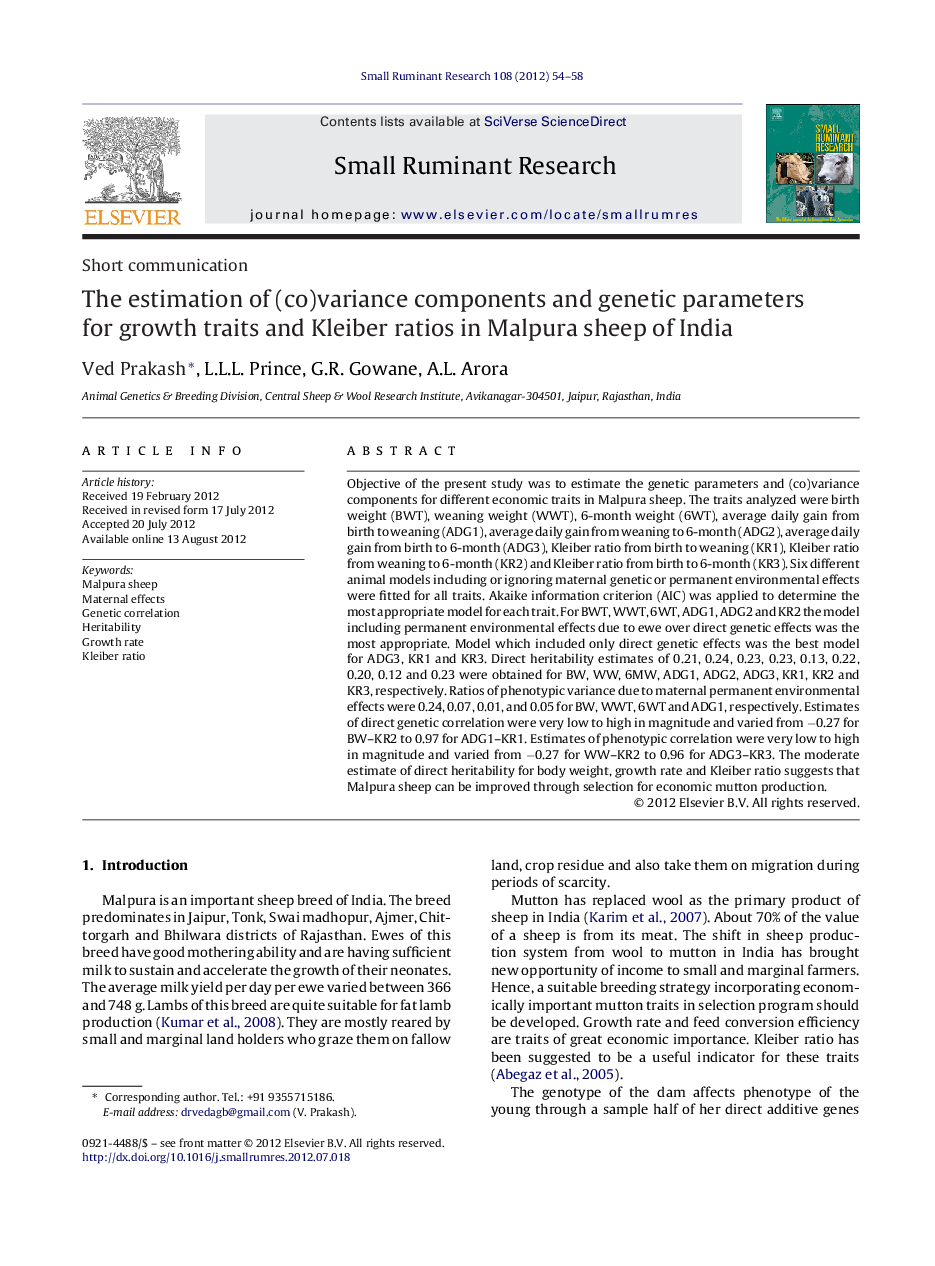| Article ID | Journal | Published Year | Pages | File Type |
|---|---|---|---|---|
| 5796233 | Small Ruminant Research | 2012 | 5 Pages |
Objective of the present study was to estimate the genetic parameters and (co)variance components for different economic traits in Malpura sheep. The traits analyzed were birth weight (BWT), weaning weight (WWT), 6-month weight (6WT), average daily gain from birth to weaning (ADG1), average daily gain from weaning to 6-month (ADG2), average daily gain from birth to 6-month (ADG3), Kleiber ratio from birth to weaning (KR1), Kleiber ratio from weaning to 6-month (KR2) and Kleiber ratio from birth to 6-month (KR3). Six different animal models including or ignoring maternal genetic or permanent environmental effects were fitted for all traits. Akaike information criterion (AIC) was applied to determine the most appropriate model for each trait. For BWT, WWT, 6WT, ADG1, ADG2 and KR2 the model including permanent environmental effects due to ewe over direct genetic effects was the most appropriate. Model which included only direct genetic effects was the best model for ADG3, KR1 and KR3. Direct heritability estimates of 0.21, 0.24, 0.23, 0.23, 0.13, 0.22, 0.20, 0.12 and 0.23 were obtained for BW, WW, 6MW, ADG1, ADG2, ADG3, KR1, KR2 and KR3, respectively. Ratios of phenotypic variance due to maternal permanent environmental effects were 0.24, 0.07, 0.01, and 0.05 for BW, WWT, 6WT and ADG1, respectively. Estimates of direct genetic correlation were very low to high in magnitude and varied from â0.27 for BW-KR2 to 0.97 for ADG1-KR1. Estimates of phenotypic correlation were very low to high in magnitude and varied from â0.27 for WW-KR2 to 0.96 for ADG3-KR3. The moderate estimate of direct heritability for body weight, growth rate and Kleiber ratio suggests that Malpura sheep can be improved through selection for economic mutton production.
